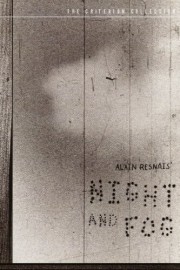Night and Fog (Short)
In 32 minutes, French director Alain Resnais, a decade removed from the end of World War II, traveled to Auschwitz and Majdanek, and gave the world one of its most significant glimpses of the Nazi machine with “Night and Fog.” It is every bit as devastating as “Schindler’s List” was in 1993, and “Shoah” (still unseen by me) was in 1985 for audiences. By now, the horrors of the Holocaust are well-versed, and accepted as truth, by the majority of people in the world, but the mindset that brought it on remains, as white supremacists and neo-Nazis continue to exist, still extolling the “virtues” of whites over any other race. A movie like “Night and Fog” is an important reminder for why it’s important to NOT despair in the face of such hate, and to fight it at all costs, lest we be like a lot of good people at that time, witnesses who would regret staying silent.
Resnais’s “modern day” images of the camps from 1955-56 are in color, and it was probably the first color footage of the camps anyone had shot. This was an important choice on the part of Resnais’s, and much praise belongs to his producer on the film, Anatole Dauman, for agreeing to it. Though powerful, the black-and-white stills and documentary footage, from the time, leave the horrible truth of what they document firmly in the memories of the past. By showing us the remains of these camps, and giving us a guided tour with his writer, poet Jean Cayrol (who also provides the narration), he is forcing us to come to grips with the recent past, and what these places housed, without the “comfort” of history long past that even the most devastating archival images provide. An editor before he turned to directing, Resnais juxtaposes his modern-day images with stills and B&W footage of the Nazi’s systematic work in motion, rounding up those they viewed as “inferior,” using them for hard labor and imprisoning them until they became too weak to be useful, and killing them, and callously using the remains for goods such as cloth or paper. Resnais and Cayrol also give us an idea of the top-down structure of the camps, not just among the Nazi officers but the prisoners, as criminals would make a place for themselves on top, though it would not necessarily save them, in the end. Cayrol’s narration and the music by composer Hanns Eisler provide a heartbreaking emotional roadmap through the images Resnais is sharing with us, and the result is an unforgettable cinematic experience that, 60 years later, is more important than ever.










